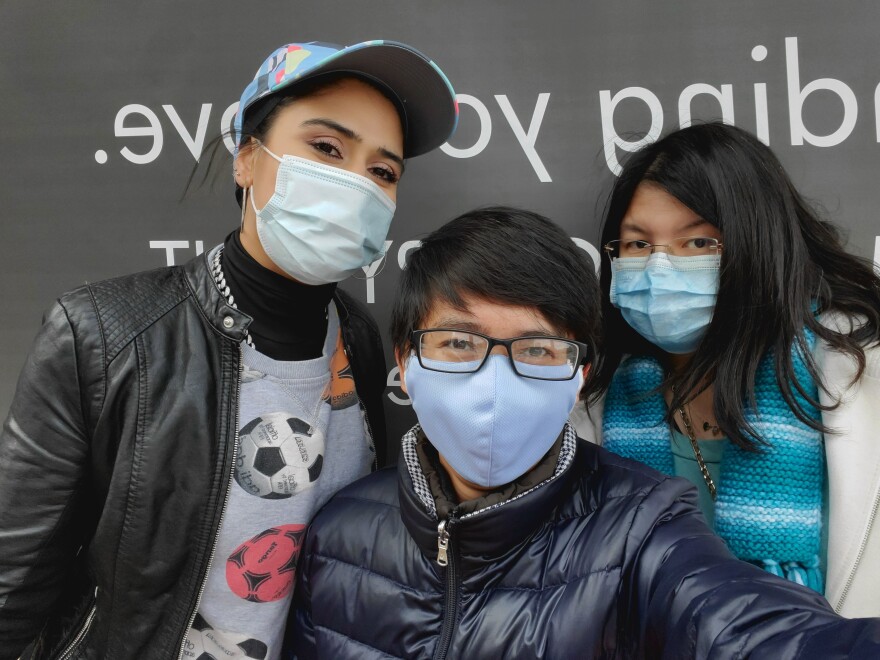In January, Han Ko was elated to see the COVID-19 vaccine rollout begin in St. Louis County. His 82-year-old mother would be in one of the first groups eligible for the vaccine. But it took much longer for her to get the vaccine than they’d hoped.
Ko’s mother, Jung Ko, is from South Korea and is not fluent in English. That made it difficult for her to register for the vaccine at clinics, pharmacies, hospitals and the public health department’s websites, where the information is in English. She lives in Frontenac near her son.
Han Ko, his wife and his daughter worked hard to get his mother a vaccine appointment.
There are over 10,000 residents of the St. Louis region who are of Asian descent, according to data available from the 2010 census, and many of them are not fluent in English. Often, English-speaking relatives help them navigate the health care system, as Ko and his wife did when registering his mother for the vaccine.
“We went through this together … my wife and I. My mom tried, too. The three of us were dedicated as a team,” Ko said. “We tried to register her on every single website we knew.”
To get his mother the vaccine, Ko and his wife and daughter spent days doing pre-registration, answering emails and filling out paperwork. Ko worries that many others will face a similar challenge.
“I'm sure there's people out there like my mother, right? So my mother, luckily, has family members who try to help them in full support,” he said. “But the people who do not have that kind of support system, how are they going to get through?”
According to Missouri’s COVID-19 Dashboard, 13,000 Asian Americans have received their first doses of the vaccine in the state, compared with 50,000 African Americans and 724,000 white residents.
The Asian American community in the St. Louis region is relatively small but includes people from China, South Korea, Vietnam, Nepal, Mongolia, the Philippines, India and Pakistan, said Ko, who is on the board of the St. Louis Asian American Chamber of Commerce.
Ko said he has translated vaccine information from English to Korean on KaKaotalk, a messaging app popular in South Korea.
Other members of the Asian American Chamber of Commerce are doing the same in Chinese, Hindi, Telugu, Nepali and other languages on various social media platforms and group chats.
“We’re trying to support Asian communities as a whole,” Ko said. “We’re trying to kind of join forces to share resources and also information, and then also support each other.”
Chau Nguyen, a volunteer for the Missouri Asian American Youth (MAAY) Foundation, takes dozens of calls a day from people who are trying to get an appointment for the vaccine.
“I’ve talked with a few elders, and they say they registered with their primary care doctor but haven’t heard back,” Nguyen said.
Many seniors say they’ve heard nothing from pharmacies or doctor’s offices on when they can get their first dose, she said.

For Caroline Fan, founder and president of the Missouri Asian American Youth Foundation, having to recruit volunteers to translate vaccine information reveals disparities in the local public health system, where Asians in the region are often overlooked.
“There are no Asian American nonprofits in the state with full-time paid staff,” Fan said. “Government agencies, hospitals, and pharmacies are not partnering with trusted validators in the community. To scour 24 different websites, call up all these places, it’s a full-time job to get a lifesaving shot. It’s maddening.”

St. Louis County health officials say they are working to provide vaccine information in many languages. The county’s pre-registration portal is available in 10 languages including Chinese, Vietnamese and Arabic. They are working to provide information in many different languages and are considering online public service announcements for vaccine drives.
Follow Megan on Twitter: @meganisonline

